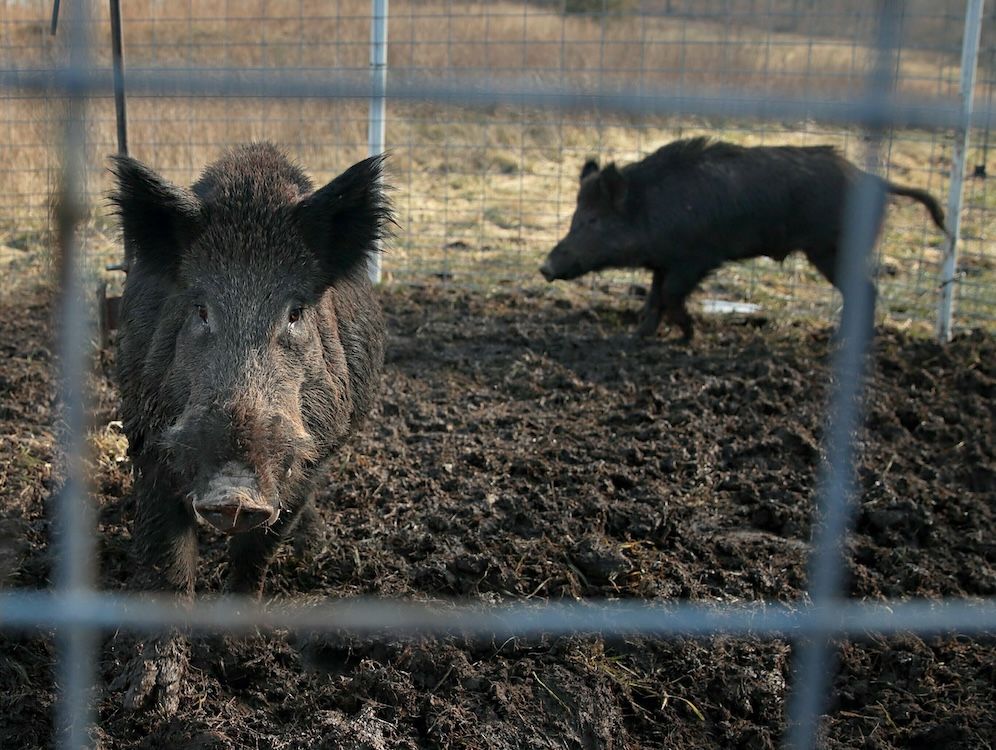
The question posed by rural Canadians (probably): what do you do about the 30 to 50 feral hogs that run into your yard within three to five minutes while your small kids play?
Answer: You squeal on ‘em .
The Invasive Species Council of B.C. is launching its contribution of a cross-border public awareness campaign on Wednesday, highlighting the real damage that invasive feral pigs cause to ecosystems, farmland and infrastructure. They tear up the ground while searching for roots and bugs to eat, though they will eat just about anything they can get in their mouths.
The humorous campaign features pigs in places they shouldn’t be — grocery stores, tractors and kitchen cupboards — but underscores its serious message: invasive pigs are a real threat.
Wild swine have been a problem in Canada and the U.S. for years, including American fears of Canadian “Super Pigs” flying south across the border from Alberta, Saskatchewan and Manitoba and running rampant in rural states.
“30-50 feral hogs” day is one of the great days in the history of Twitter. pic.twitter.com/RJTGrqXO8R
— Mike Beauvais (@MikeBeauvais) August 5, 2019
With sows capable of having two litters a year, averaging six piglets a litter, they’re capable of explosive population growth.
“We’ve seen the damage invasive pigs can cause in other provinces, and we have a real opportunity in B.C. to prevent that from happening here,” said Gail Wallin, executive director of the Invasive Species Council of B.C. “That’s why we’ve launched this campaign — to raise awareness and remind people that their observations matter. Whether you’re on the land every day or out for a weekend hike, early reporting of pigs on the land makes all the difference.”
It’s not just the physical damage that is of concern. Should a disease like African swine fever ever reach the Canadian wild population, the feral population could act as a reservoir and make future outbreaks difficult to contain. That could devastate Canadian pork farm stock. B.C. law requires all farm pigs to be securely fenced.
Pigs aren’t native to North America, but were introduced from Europe, Asia and North Africa for farming, hunting and as pets. The porkers who went on the lam crossbred with wild boars, with their hybrids — which can range from 75 to 250 pounds — becoming Canada’s most destructive large mammal.
The problem has been around for decades, when farmers used to raise wild boar. But when the market dried up, many stocks were just set free to roam the country, surprisingly proving resistant to harsh Canadian winters.
Watch for their tracks and signs of wallows — large, shallow muddy pits — which they use to cool down in and protect their skin. Use the Invasive Species Council of B.C. website or call their toll-free number 1-888-933-3722 to make a report.
Invasive pigs have been seen across B.C., but especially in the Peace River region, east Chilcotin and west of Kamloops.